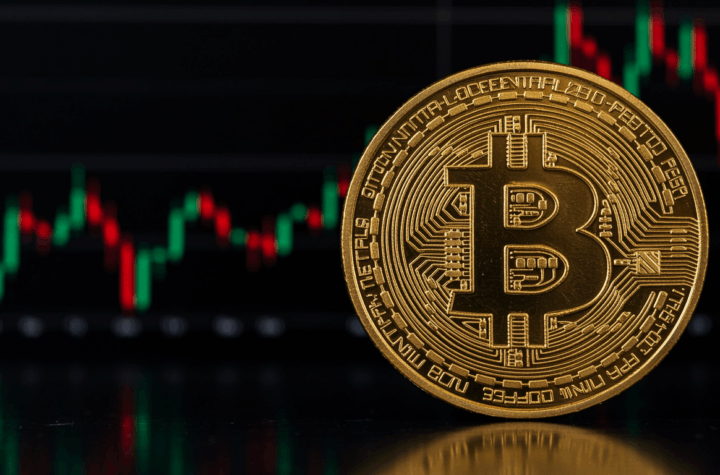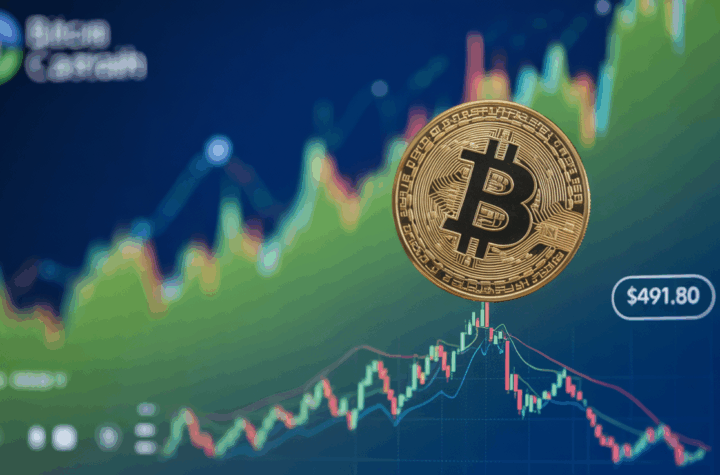
U.S. Bond Market Unmasks Fiscal Reality; Bitcoin and Gold Set to Benefit
The myth of U.S. fiscal stability is unraveling as bond markets reveal deep-rooted concerns about government debt, shining a spotlight on bitcoin and gold as potential safe havens.
Financial markets have long played a game of kayfabe — a term borrowed from pro wrestling that describes a staged illusion accepted as real by the audience. For years, despite repeated debt ceiling crises, investors have poured money into U.S. Treasuries at rock-bottom yields, sustaining the belief that the government is a rock-solid borrower.
That illusion is now cracking. Recent market moves, anticipated by investors like Paul Tudor Jones, suggest the bond market is growing wary of the U.S.’s fiscal outlook, bolstering demand for alternative stores of value such as bitcoin and gold.
Treasury Yields Signal Fiscal Concerns
The headline story is the U.S. 30-year Treasury yield crossing above 5%, stirring unease about potential financial instability. More revealing, however, is the jump in yields on Treasury Inflation-Protected Securities (TIPS), which recently hit their highest mark since 2001.
Investors now demand a significant real yield premium—above inflation—for lending to the government long term. This signals doubts rooted in fiscal policy rather than inflation, as price growth slows toward the Fed’s target and forward inflation expectations remain steady.
“The market’s message: We don’t trust your fiscal path and want to be compensated accordingly,” said market analyst EndGame Macro.
With the U.S. national debt surpassing $36 trillion and expected to rise sharply in the next decade, economic growth faces heavy headwinds, according to EY’s quantitative analysis.
Brookings’ Robin Brooks points to soaring forward real interest rates as clear evidence that bond investors doubt fiscal sustainability, more so than during previous tightening cycles, highlighting the urgent need for fiscal reform.
Broken Links Between Currency and Bonds
Traditionally, rising bond yields strengthen the domestic currency. But the dollar’s recent weakness despite climbing yields suggests investors are pulling back from U.S. assets over fiscal concerns.
The euro’s recent gains and the bullish sentiment in options markets toward EUR/USD indicate a shift in confidence away from the dollar.
Gold and Bitcoin Shine Bright
History shows that when governments face debt crises, they often resort to inflation to reduce the real value of debt—fueling demand for tangible assets like gold and bitcoin.
Notable investors like Paul Tudor Jones and economist Russell Napier emphasize bitcoin and gold as key hedges against inflation and financial repression, which could include policies like yield curve control to cap bond yields and inject liquidity.
Arthur Hayes, Maelstrom’s founder, foresees such yield curve controls coming to the U.S., potentially igniting another bitcoin rally fueled by increased liquidity.
Recent rollbacks in trade tariffs also suggest the financial system’s fragility and the likelihood of further monetary stimulus.
Caution Amid Optimism
While the outlook favors bitcoin and gold, volatility in U.S. Treasury markets poses risks that could trigger broader sell-offs.
Currently, the MOVE index—which tracks expected Treasury volatility—is declining, indicating a calm period for now. However, investors remain alert to potential shocks.






More Stories
“Dogecoin steadies near $0.16 support amid profit‑taking that caps upside momentum.”
RLUSD Pilot Boosts XRP 5%, Technical Momentum Points to $2.50
How Aggressively Are BTC Traders Hedging After Recent Dip Under $100K?